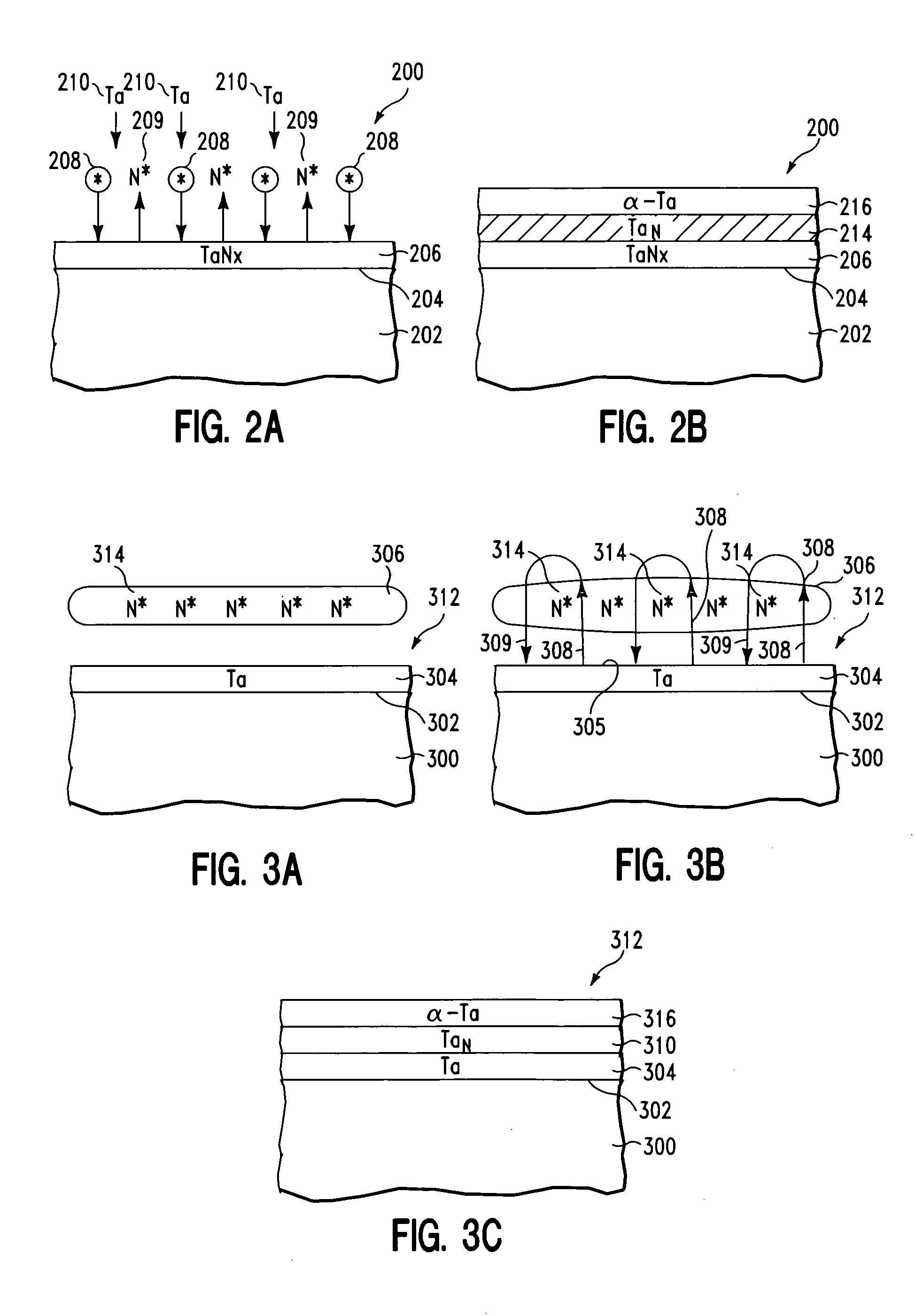Method of depositing low resistivity barrier layers for copper interconnects
a copper interconnection and resistivity barrier technology, applied in vacuum evaporation coatings, sputtering coatings, coatings, etc., can solve the problem of difficult to obtain precisely the desired nitrogen content in the seed layer, and achieve the effect of high energy species
- Summary
- Abstract
- Description
- Claims
- Application Information
AI Technical Summary
Benefits of technology
Problems solved by technology
Method used
Image
Examples
Embodiment Construction
[0046] This application is a continuation-in-part of U.S. patent application Ser. No. 10 / 246,316, filed Sep. 17, 2002, which is allowed but not yet issued; which is a continuation-in-part of U.S. patent application Ser. No. 10 / 146,416, filed May 14, 2002, which is abandoned; which is a continuation of U.S. patent application Ser. No. 09 / 770,934, filed Jan. 25, 2001, which issued as U.S. Pat. No. 6,458,255, on Oct. 1, 2002; which is a continuation of U.S. patent application Ser. No. 09 / 160,638, filed Sep. 24, 1998, which is abandoned. This application is also a continuation-in-part of U.S. patent application Ser. No. 08 / 995,108, filed Dec. 19, 1997, which is allowed but not yet issued. This application is also a continuation-in-part of U.S. patent application Ser. No. 10 / 796,602, filed Mar. 8, 2004, which is allowed but not yet issued; which is a continuation of U.S. patent application Ser. No. 09 / 886,439, filed Jun. 20, 2001, which issued as U.S. Pat. No. 6,758,947, on Jul. 6, 2004;...
PUM
| Property | Measurement | Unit |
|---|---|---|
| power | aaaaa | aaaaa |
| power | aaaaa | aaaaa |
| sizes | aaaaa | aaaaa |
Abstract
Description
Claims
Application Information
 Login to View More
Login to View More - R&D
- Intellectual Property
- Life Sciences
- Materials
- Tech Scout
- Unparalleled Data Quality
- Higher Quality Content
- 60% Fewer Hallucinations
Browse by: Latest US Patents, China's latest patents, Technical Efficacy Thesaurus, Application Domain, Technology Topic, Popular Technical Reports.
© 2025 PatSnap. All rights reserved.Legal|Privacy policy|Modern Slavery Act Transparency Statement|Sitemap|About US| Contact US: help@patsnap.com



